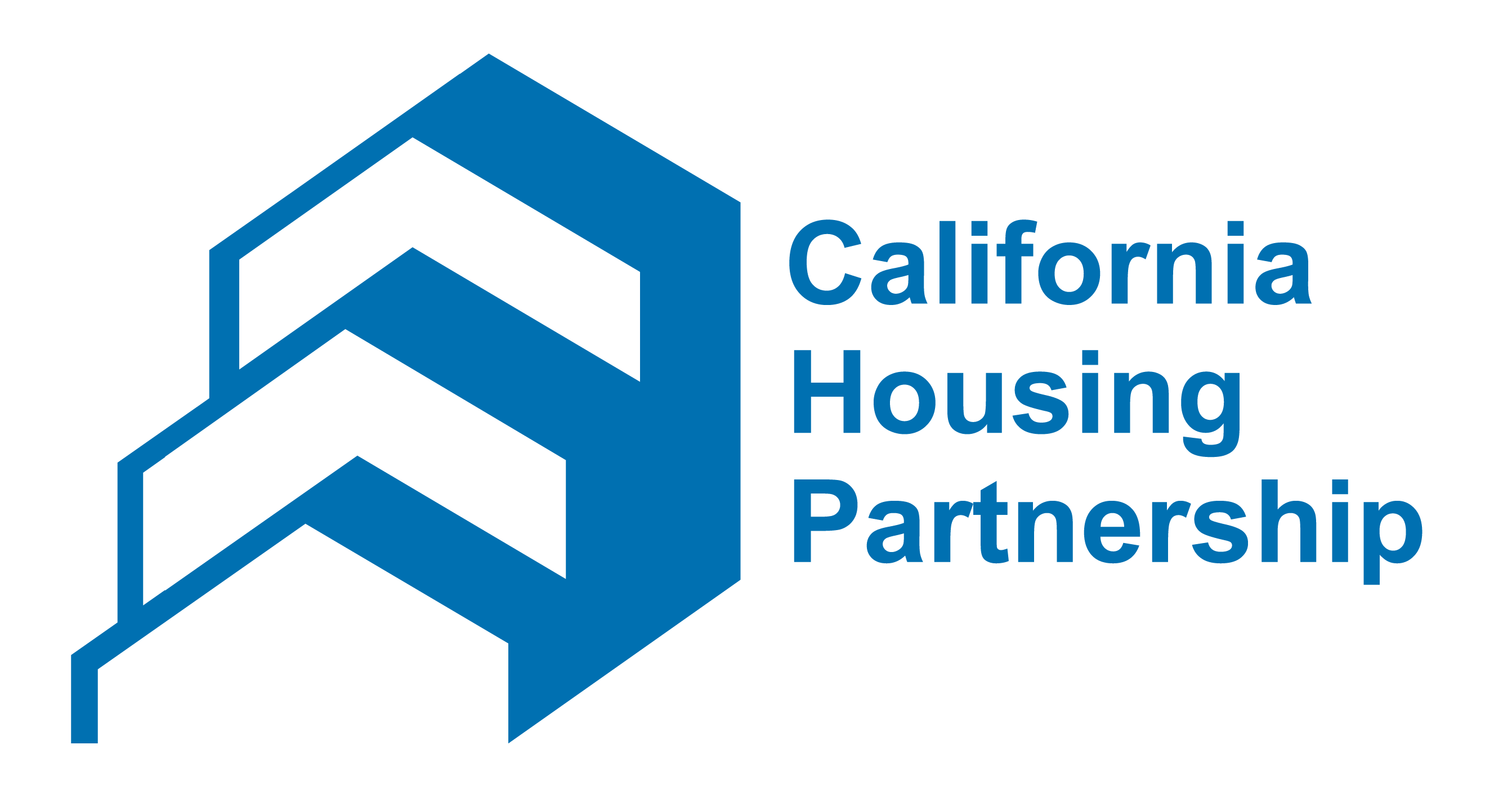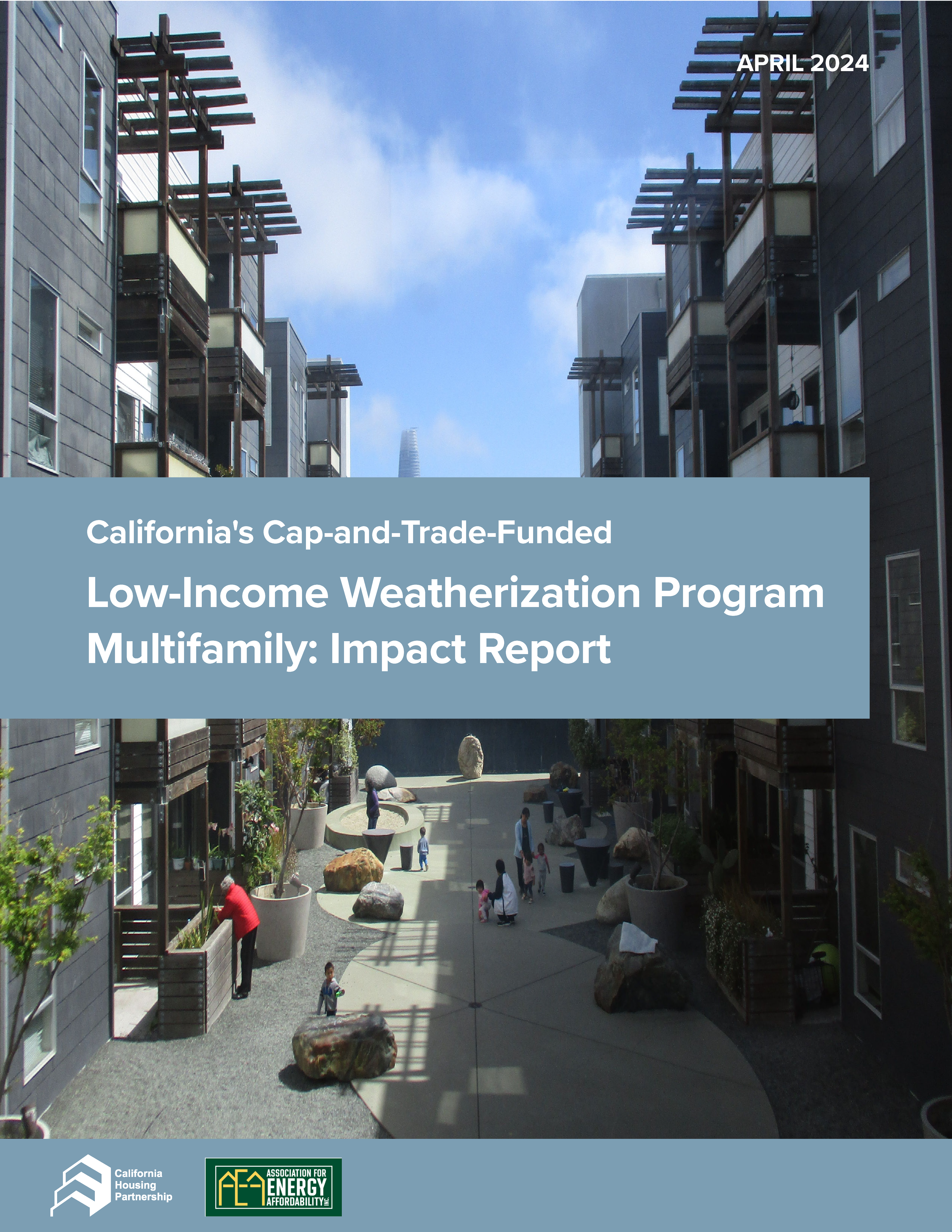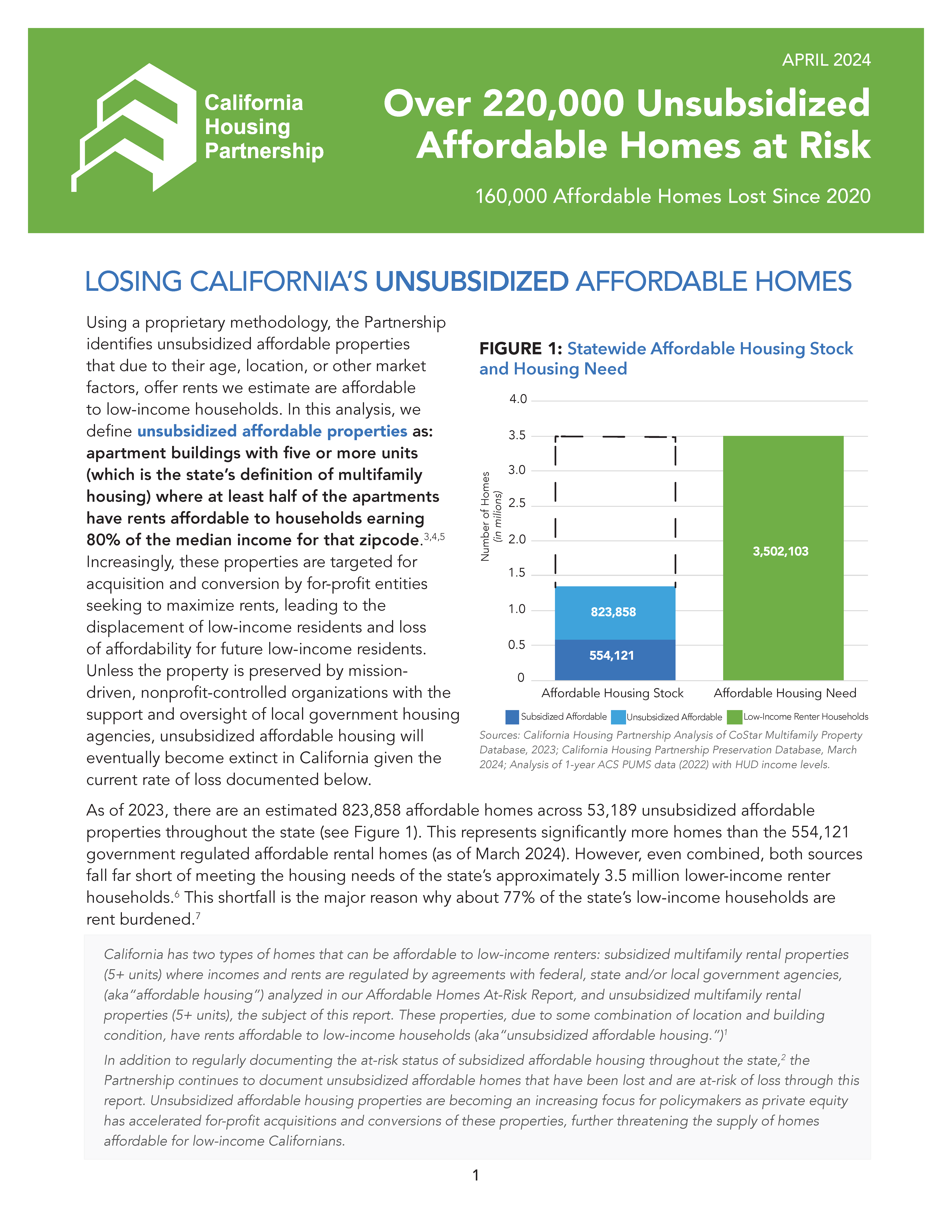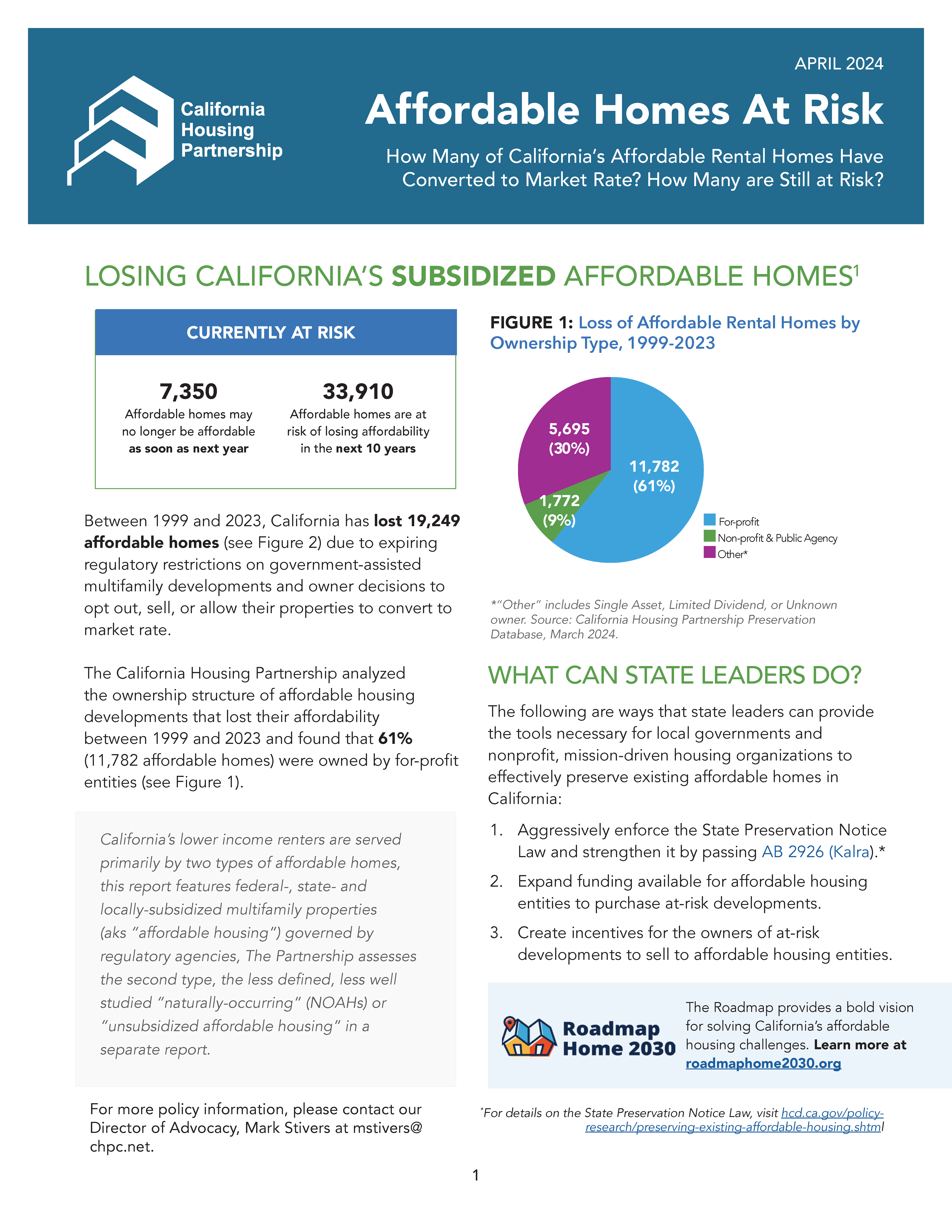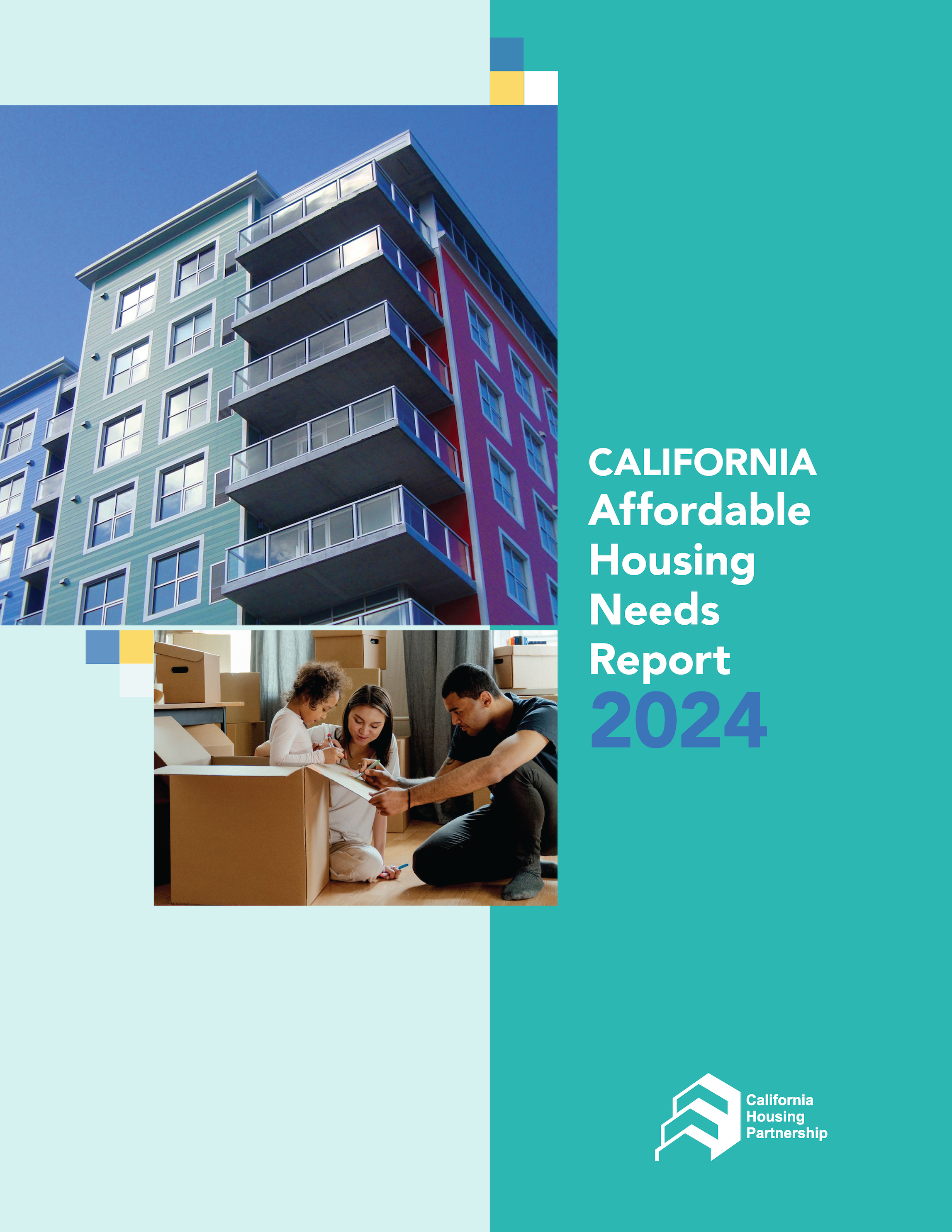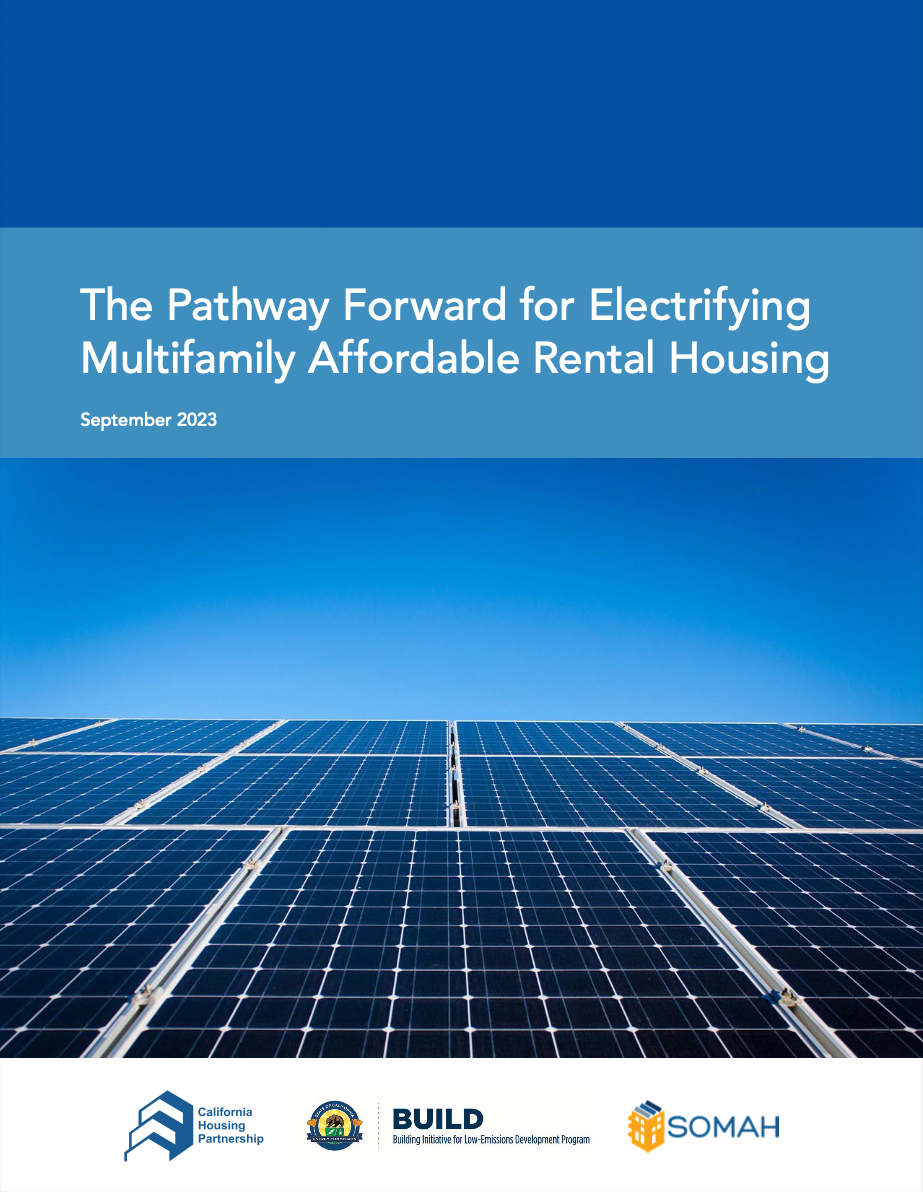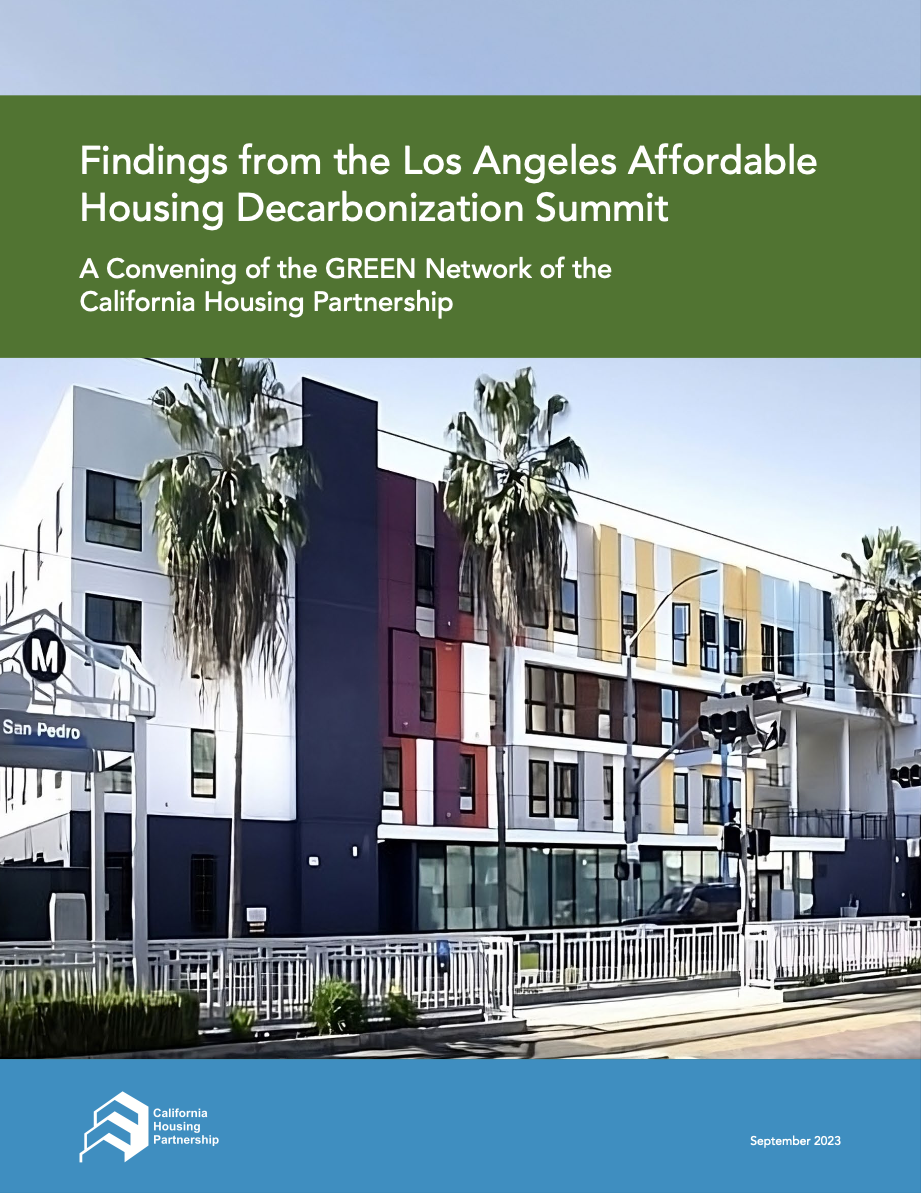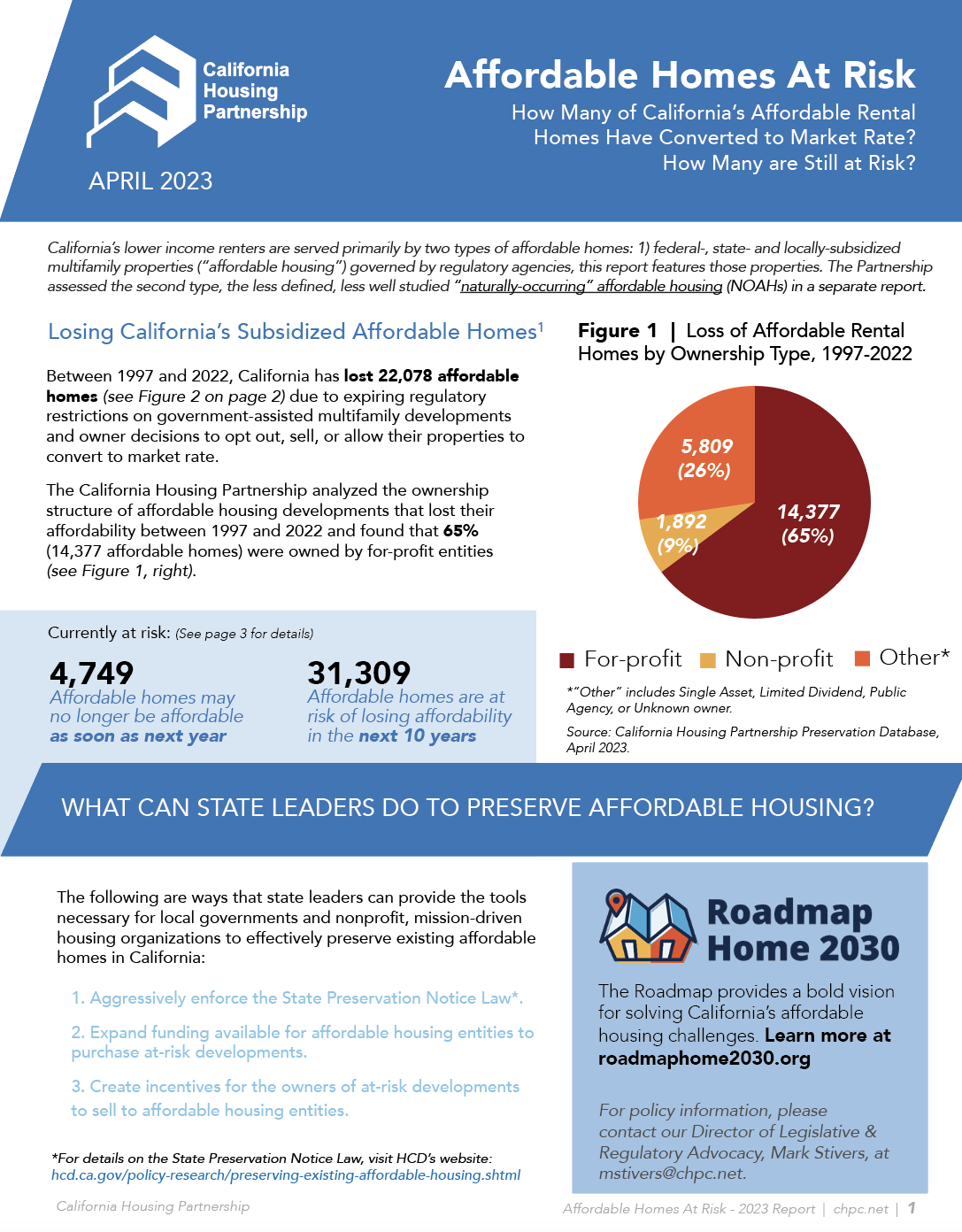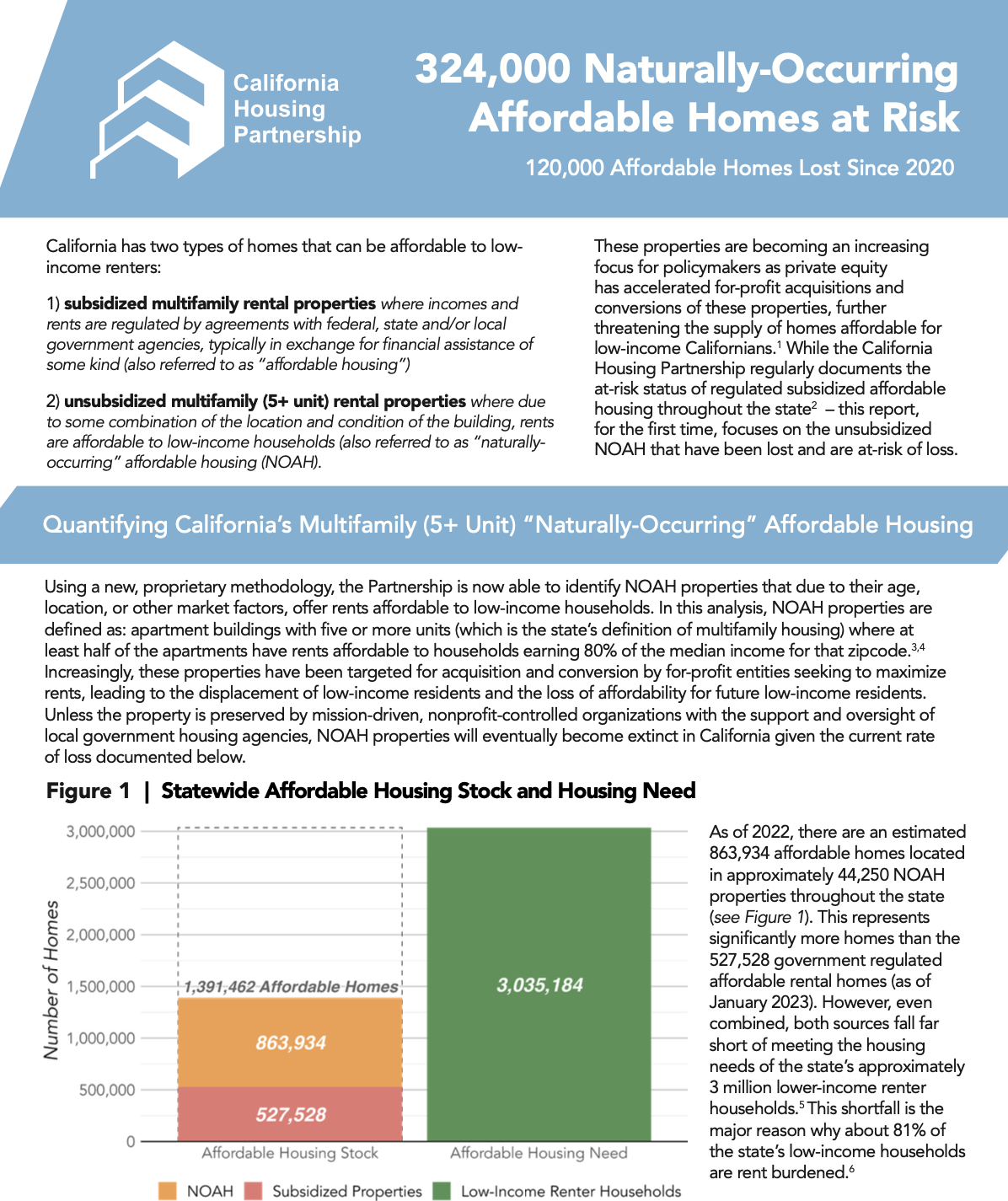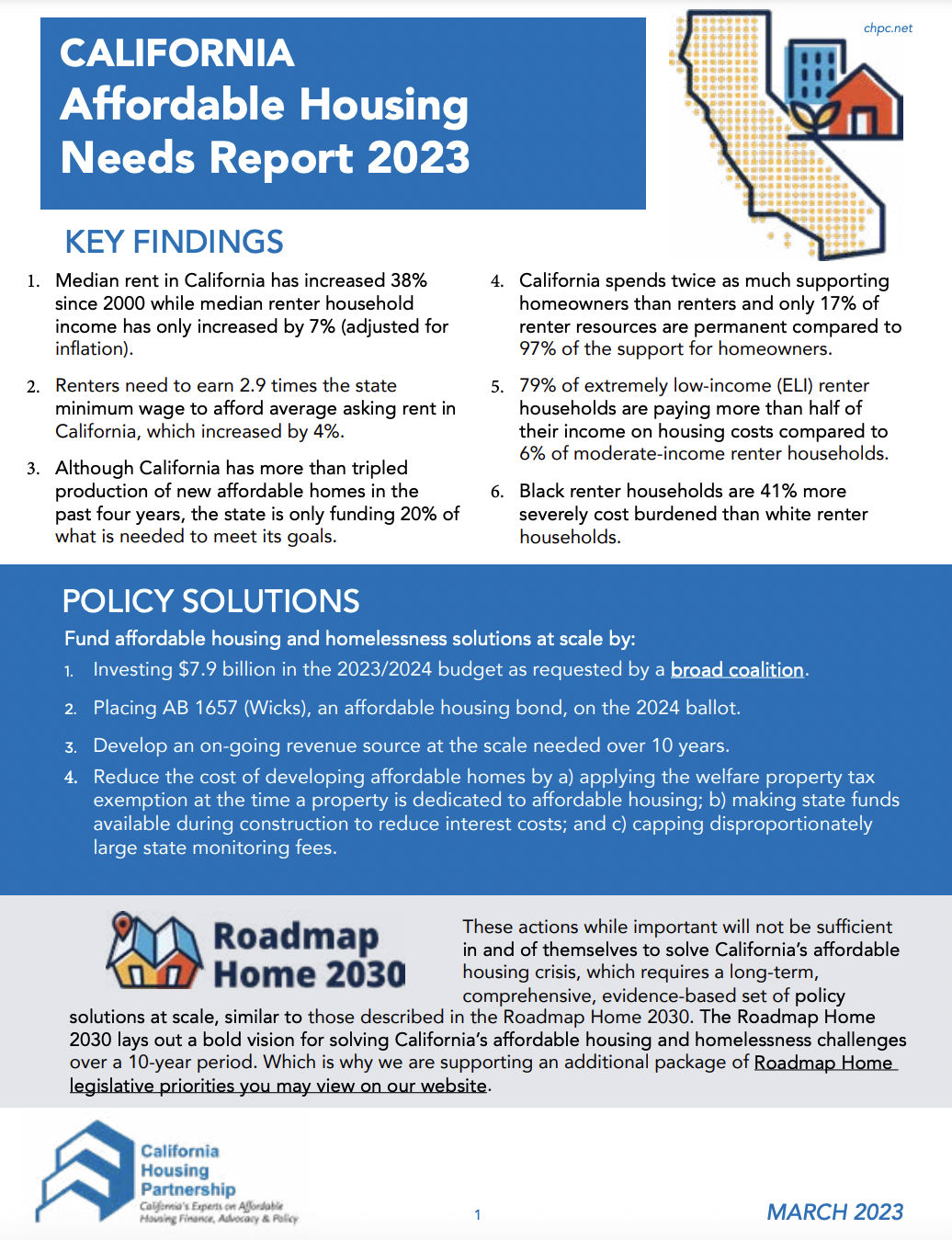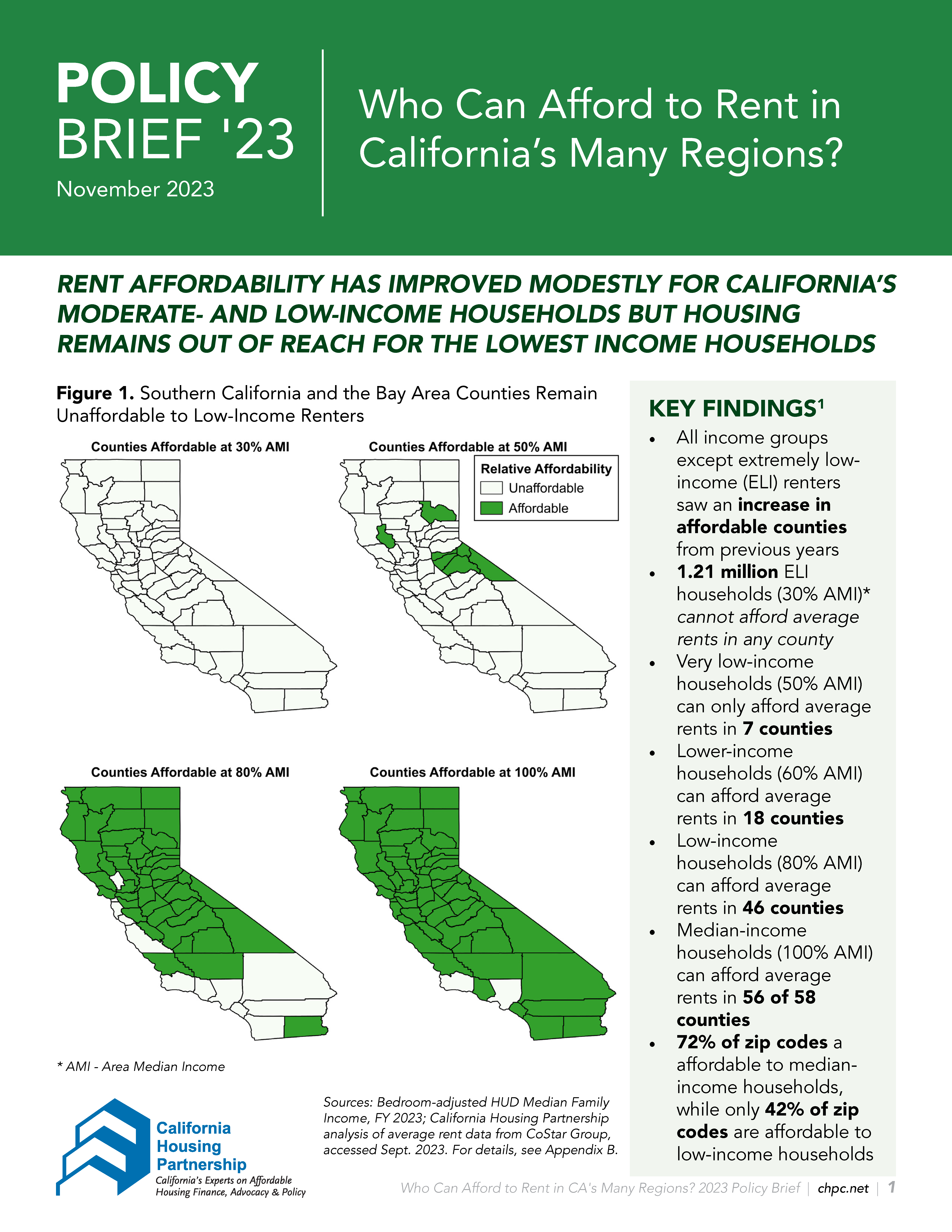Low-Income Weatherization Program Multifamily: Impact Report 2024
Updated in 2024 and published in collaboration with the Association for Energy Affordability, this Impact Report presents the latest findings on the climate and community benefits delivered by the Cap-and-Trade-funded Low-Income Weatherization Program (LIWP) Multifamily since its launch in 2016.
Unsubsidized Affordable Homes At-Risk | 2024 Report
Using a proprietary methodology, the California Housing Partnership identified unsubsidized naturally-occurring affordable housing (NOAH) properties that due to their age, location and other market factors, offer rents affordable to low-income households. Notable findings in this 2024 report include: Already Lost 163,000+ homes are no longer affordable, largely concentrated in Read More
Affordable Homes At-Risk | 2024 Report
California’s affordable housing crisis will only worsen if nothing more is done to protect the thousands of subsidized affordable rental homes at risk of market rate conversion. According to the Affordable Homes At Risk | 2024 Report released April 5 by the California Housing Partnership: 19,249 subsidized affordable rental homes have Read More
California Affordable Housing Needs Report 2024
The California Housing Partnership annually assesses the needs of California’s low-income renters for the purpose of informing state and local policy leaders. Key findings from this year’s California Affordable Housing Needs Report: Although California has more than doubled production of new affordable homes in the past five years, the State is Read More
The Pathway Forward for Electrifying Multifamily Affordable Rental Housing
Affordable housing providers are faced with the challenge of providing safe and comfortable housing for low-income families while also being mindful of their impact on the environment. California policymakers have embraced electrification as a promising solution for reducing carbon emissions and improving energy efficiency in buildings, which are associated with Read More
Findings from the Los Angeles Affordable Housing Decarbonization Summit
The 2023 Los Angeles Affordable Housing Decarbonization Summit (February 18th, 2023), marked a milestone in the city’s efforts towards sustainable and energy-efficient affordable housing. Organized and hosted by the California Housing Partnership (the Partnership) and the Southern California Association of Non-Profit Housing (SCANPH), this event brought together key stakeholders from Read More
2023 Subsidized Affordable Housing At Risk Report
California’s affordable housing crisis will only worsen if nothing more is done to protect the thousands of subsidized affordable rental homes at risk of market rate conversion. According to the Affordable Homes At Risk | 2023 Report released April 20 by the California Housing Partnership: 22,078 subsidized affordable rental homes have already been Read More
California Naturally-Occurring Affordable Homes At Risk Report 2023
Using a new, proprietary methodology, the California Housing Partnership is now able to identify unsubsidized naturally-occurring affordable housing (NOAH) properties that due to their age, location and other market factors, offer rents affordable to low-income households. This is the first statewide assessment of At-Risk NOAH that has been done to Read More
California Housing Needs Report 2023
The California Housing Partnership annually assesses the needs of California’s low-income renters for the purpose of informing state and local policy leaders. Key findings from this year’s California Affordable Housing Needs Report: California spends twice as much supporting homeowners than renters and only 17% of renter resources are permanent compared to Read More
Policy Brief 2023: Who Can Afford to Rent in California’s Many Regions?
This 2023 policy brief investigates the income required to afford rent across California and the cost burden experienced by households in different income groups. The analysis provides insights indicating the need for state and local leaders to continue to prioritize scarce affordable housing resources for Californians at the lowest income Read More
